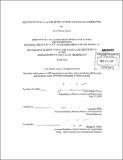| dc.contributor.advisor | Edward E. Pilat. | en_US |
| dc.contributor.author | Torres, Luis Alberto (Torres Mendoza) | en_US |
| dc.contributor.other | Massachusetts Institute of Technology. Dept. of Nuclear Science and Engineering. | en_US |
| dc.date.accessioned | 2011-05-09T15:21:42Z | |
| dc.date.available | 2011-05-09T15:21:42Z | |
| dc.date.issued | 2010 | en_US |
| dc.identifier.uri | http://hdl.handle.net/1721.1/62697 | |
| dc.description | Thesis (S.B.)--Massachusetts Institute of Technology, Dept. of Nuclear Science and Engineering, June 2010. | en_US |
| dc.description | "June 2010." Cataloged from PDF version of thesis. | en_US |
| dc.description | Includes bibliographical references (p. 28). | en_US |
| dc.description.abstract | With growing demands for commercial nuclear power, there is also a growing need for better energy efficiency from nuclear power reactors. In order to reach a high burnup up to 100 MWd/kg, previous research has examined the use of thorium-plutonium mixedoxide fuel as a potential candidate for this high-burnup goal. Though the neutronics studies have looked upon this fuel type favorably, the purpose of this paper is to investigate the self-protection capabilities of this fuel type, for anti-proliferation purposes. In particular, there were two proliferation-resistance methods that were analyzed. First, this study examined the time-dependant dose-rate of the spent fuel caused by the decay of the isotope uranium-232, which releases a high-energy gamma of 2.6 MeV. Next, this study examined the possibility of denaturing the fuel with depleted uranium in order to dilute the weapons-usable isotope uranium-233 in the spent fuel. The U-232 dose rate was also calculated for the denatured case. Ultimately, the study found that there was a negligible different in the amount of time that it takes for either fuel type to become self-protective. The denatured case showed that it requires much more plutonium than the undenatured case in order to ensure that there is not sufficient weapons-usable U-233 in the discharged fuel. | en_US |
| dc.description.statementofresponsibility | by Luis Alberto Torres. | en_US |
| dc.format.extent | 28 p. | en_US |
| dc.language.iso | eng | en_US |
| dc.publisher | Massachusetts Institute of Technology | en_US |
| dc.rights | M.I.T. theses are protected by
copyright. They may be viewed from this source for any purpose, but
reproduction or distribution in any format is prohibited without written
permission. See provided URL for inquiries about permission. | en_US |
| dc.rights.uri | http://dspace.mit.edu/handle/1721.1/7582 | en_US |
| dc.subject | Nuclear Science and Engineering. | en_US |
| dc.title | Self-protection analysis of denatured thorium-plutonium fuel | en_US |
| dc.type | Thesis | en_US |
| dc.description.degree | S.B. | en_US |
| dc.contributor.department | Massachusetts Institute of Technology. Department of Nuclear Science and Engineering | |
| dc.identifier.oclc | 714523732 | en_US |
